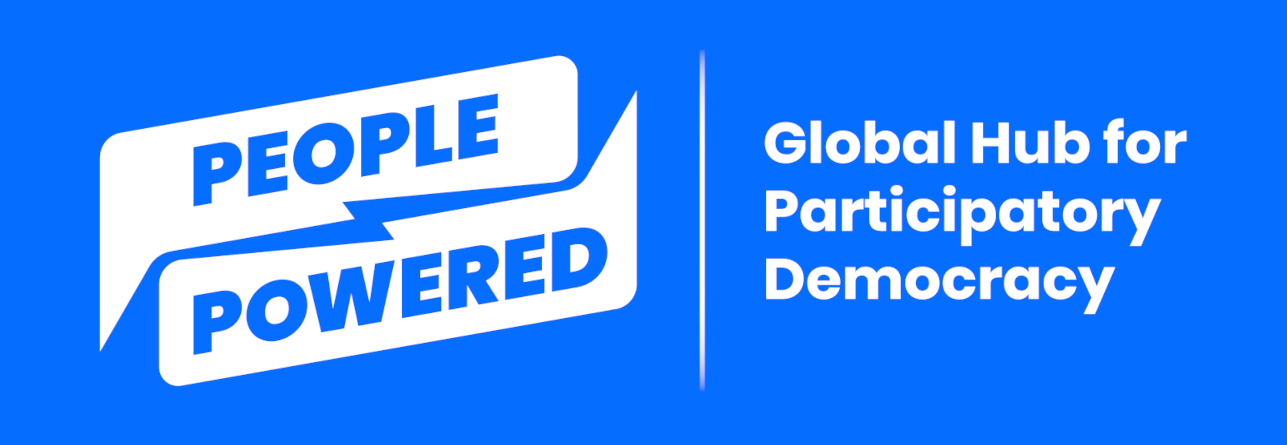Book Offers Global View of PB Growth and Impact
/The goals for participatory budgeting are lofty and idealistic--ranging from giving “ordinary” citizens a voice in how government funds are spent to reallocating funds to poor and other underserved communities. But how and the degree to which these principles are implemented varies wildly, conclude the authors of a book just out from Oxford Press, “Participatory Budgeting in Global Perspective.”
And that reality is both the strength of PB—allowing it to spread across the globe—and its Achilles’ heel: “There is a wide variation in the capacity of PB programs to generate significant outcomes for civil society, both in terms of people’s well-being and the degree of accountability it brings to government,” write Brian Wampler, Stephanie McNulty, and Michael Touchton. And even that was a hard conclusion to come to, in light of the “profound unevenness in what we know about PB programs.”
So, what are the lessons that can be drawn from this inconsistent mix of PB programs and outcomes (or lack of them)? Pam Bailey, communications director for People Powered, interviewed two of the authors, who also are members of the Global PB Research Board: Stephanie McNulty, associate professor at Franklin & Marshall College (Lancaster, Pennsylvania), and Michael Touchton, assistant professor at the University of Miami.
The million-dollar question: Does PB ‘work’?
Pam: As a new employee of People Powered, I am inspired by the organization’s mission to “expand people’s power to make government decisions.” But one of the primary conclusions of your book is that while the PB Atlas documents as many as 11,000 PB projects around the world, many (most?) of them seem to fall short of the goal of actual decision-making by citizens that result in tangible, measurable benefits.
Stephanie: The mission is aspirational, for sure. But it’s an aspiration worthy of having. Plus, no matter what, we know that PB does get people involved in democratic politics. And some form of participatory institution is better than none. PB educates people about the messiness of democracy, how government works. I’ve been interviewing people in Peru for 10 or 15 years, asking, “why are you doing this, since it often just barely works?” And they all say they don't want to get rid of it; they just want it to be better.
Michael: The fact is that enthusiasm for PB has far outpaced the evidence. We concluded we could divide PB projects into three categories based on what we know about their impact: those with known beneficial impacts (a few places), a broad swath of others with unknown impact due to lack of evidence, and then a number of places where we have enough evidence to say that PB is not working the way it needs to for civil society to benefit.
Michael Touchton
For example, in many PB programs, the choices made by citizen participants are non-binding, meaning governments can and often do act in opposition to residents’ vote. PB participants also may not be allowed to choose their own spending priorities; rather, they are instead asked to ratify projects that government officials have pre-selected. It doesn't mean we should stop working to make programs match our enthusiastic goals, but we should be a little more realistic about what we're likely to achieve and how quickly.
It’s important to remember that transformative change is difficult for any reform to bring about. Most of the participatory budgeting programs around the world have only been adopted in the last five to 10 years. It's unrealistic to think that significant change will occur in any program under that timeframe, particularly in low-income locales with low state capacity and little experience with citizen engagement in public policy.
We also should remember that “success” can be defined in many different ways. For example, we know it does increase resident engagement with politics and government. It also educates people about the messiness of democracy. And if you look at the state of democracy around the world right now, that's worth something—to have people learning about how government works (and doesn’t work). Even though it's imperfect, some participatory democracy in local politics is better than none.
Motivators that drive PB
Pam: You write in the book that government officials’ underlying motivations for adopting PB are crucial to understand because they determine the form it takes, the resources allocated to it, etc. While some governments are altruistically motivated to implement PB, others are ‘pushed’ into it by national law or international donors—which you call a “coercive” model.
In fact, you also note that in Africa, “international agencies and donors drive PB adoption in most cases…making local public officials accountable to external entities rather than to local civil society.” What advice would you offer donors and other external agencies?
Stephanie: I’d give them the same advice we tell them about all of their development programs: to be truly consultative and participatory in the project-planning stage.
Stephanie McNulty
Michael: They should also consider the sequencing of their outreach. Building the capacity of local governments and simultaneously expanding participatory democracy is very, very difficult. For example, in Kenya, subnational government units (counties) were created just about a decade ago. They're still building capacity. But at the same time, they're trying to adopt PB. Do these governments really want these programs? Most of them, I suspect, don't. And their behavior reflects that. They're willing to go through the motions, but they have no interest in ceding their newfound authority to citizens who they believe have no knowledge, understanding, or appropriate interest in selecting and implementing development projects.
International organizations have to be very careful to bind their own hands. It’s better to provide a menu of options that client governments can adopt with extra funding, rather than force PB.
For more about the pros and cons of mandating PB at the local level via national law, register for the release of our new in-depth report on the subject on December 14.
The role of CSOs
Pam: You write in your book that countries in sub-Saharan Africa tend not to have well-established civil society organizations (CSOs) that can “co-govern.” Is this also an issue of “sequencing”?
Michael: The conditions we identify as being conducive to participatory budgeting are local state capacity, multiparty democratic competition (which changes incentives for public officials) and a robust civil society. There are others but it's probably those three I’d single out. If it's just the government that has the capacity and is truly engaged, it'll be a captured process from the outset. Participants who act like honored guests instead of partners won’t be as likely to hold the government accountable.
Governments that invest in PB because of its normative ideals tend to work with CSOs to incorporate citizens into the process. But governments that adopt it as a new governance tool tend not emphasize engagement or expansion of CSOs.
Stephanie: There's a lot of literature saying that we need strong civil society organizations for representative democracy, not just PB.
What happens when an authoritarian government comes in?
Pam: Brazil is credited with starting PB and having some of the most successful programs. Today, however, that is not the case and now an authoritarian administration is in place. What happened in Brazil and to what extent can PB even be practiced under authoritarian regimes?
Michael: A key challenge with PB is longevity and sustainability through institutionalization, such as via laws that enshrine the practice. But that is easier said than done. PB was seemingly entrenched in Brazil, but most PB programs there are now gone. In part, that was because PB was associated with the Workers Party, and when mayors and governors from other parties were elected, they eliminated it. PB was adopted through executive orders, so it was easy to roll back.
An illiberal shift just about anywhere, as we've seen in both Venezuela (to the left) and Brazil (to the right), has the potential to undermine any participatory program. If these programs are a partisan policy endeavor that's adopted by executive order, and not institutionalized through legislation, they're not likely to survive when you have a shift like this.
Against this backdrop, there's been a broad transition from PB as a radical democratic project to a technical policymaking tool. Governments across the political spectrum can ideologically support PB as a way to improve governance through transparency and accountability. That includes non-democratic governments. Key to their legitimacy is to foster public perception that they are responsive, accountable and deliver public goods. PB helps them to do that.
Thus, it’s possible for governments on the right to support the concept that local knowledge should be preeminent in decision making, and that residents should make decisions, not the government. That's actually right-wing talk. So, one very likely scenario is for a government to unilaterally cut the development budget in half, then give citizens authority over all of that remaining half. That might prove to be very popular, because the public has more decision-making authority than they had before. But the fact remains that overall spending is slashed.
Stephanie: We need to remember that the findings that exist indicate that local participatory democratic innovations do not trickle up to national-level changes. It's great for people to be involved in local decision making, and it seems to be able to bring about improvements in well-being outcomes like infant mortality, for example. But we don't have any research showing that this improved well-being trickles up to improved indicators of democracy, or really anything, at the national level.
Trends in PB
Pam: Among the trends you note over time and across countries are the movement away from “radical, democratic” exercises that have social justice as their central mission and the allocation of smaller proportions of the budget to PB. Put that in perspective for us.
Michael: The first wave of PB, which emanated out of Brazil, was a radical experiment to expand democracy and social justice. Today, we have the most data from PB activities in Europe and North America, where they tend to be oriented more toward civic education and community empowerment than on a dramatic inversion of spending priorities.
Stephanie: If a program is designed to improve service delivery or engage more types of people, those are the results you’ll tend to get. You can’t expect to improve issues related to social justice, however, if the process isn’t designed to do so. It’s not automatic. It has to be intentional. And that’s less common these days.
Michael: PB is also increasingly being implemented at lower levels—moving to districts and boroughs from cities, for example. Those governments by nature have smaller pots of money, but not necessarily any less on a per-capita basis. And it’s certainly not less meaningful.
Pam: What about the transition to public participation via online tools that accelerated during the COVID-19 pandemic? You note in your book that “recent trends show rapid growth in online PB, and that this limits accountability and true citizen engagement.”
Michael: The advantages of online engagement are convenience and ease of participation. So, you can grow the number of people voting, for example, but there's almost no deliberation in most online processes. I believe most of the positive benefits individuals enjoy from participation accrue because of a deliberative experience. Losing that makes PB more of a technical policymaking tool and a popularity contest among proposals.
I'm concerned that many governments will opt not to go back to in-person meetings, because online platforms have proven to be convenient and to require a lot less money and staff time.
Broader but shallower involvement might have its benefits, but deeper involvement is what we want out of PB. This needs to be evaluated going forward. For now, my recommendation is to hold public, deliberative meetings in parallel to online voting, especially for individuals who don’t engage so much that way due to access or age, for example.
How to encourage more research
Pam: We began this interview by noting how little is known about the impact of PB on the ground. What can be done to encourage more such research and obtain funding for it?
Michael: Advocacy for participatory budgeting can't be purely based on ideological affinity with its goals. It has to be based on empirical evidence. It matters for the credibility of People Powered, and for the credibility of any advocates who promote these kinds of strategies. Right now, we have a few dozen researchers versus 11,000 and growing PB programs. Yet, for example, the World Bank's budget for the evaluation of PB is roughly $500,000, compared to around a billion dollars for participatory budgeting promotion around the world.
The resistance isn’t just about the money. It’s also this: Why should organizations evaluate their own programs when there's a good chance the results will be negative? They don't want to face that. Hence, there’s a dramatic imbalance between the funding to promote programs and the money allocated to evaluate them. We need to push back against that attitude, and also question how the money is spent.
Watch the video of our recent webinar, featuring Stephanie, Michael and others discussing the new global theory of change for participatory budgeting.







